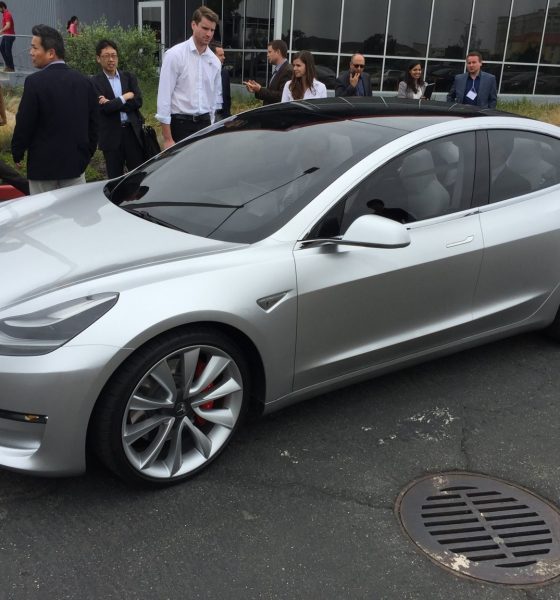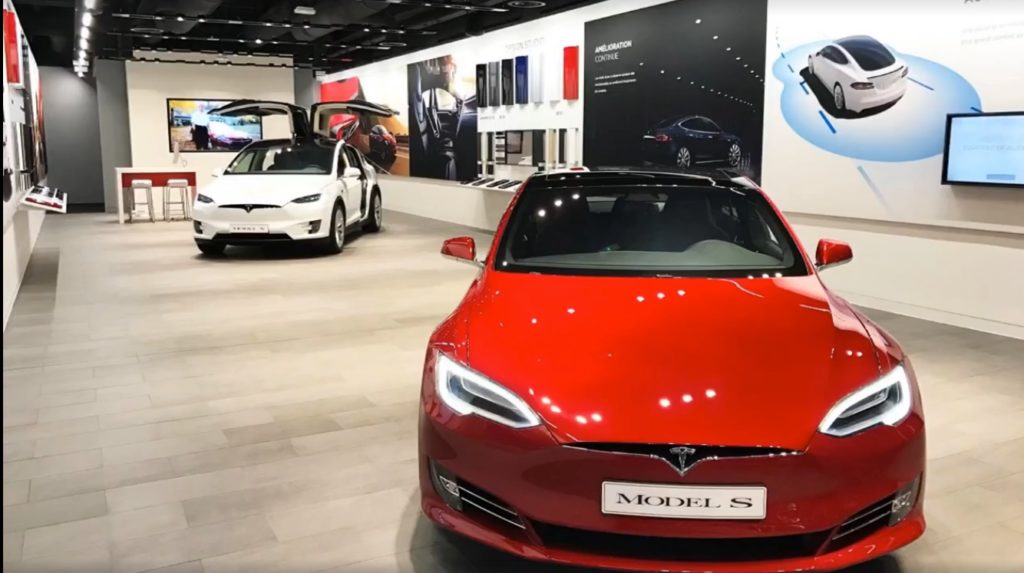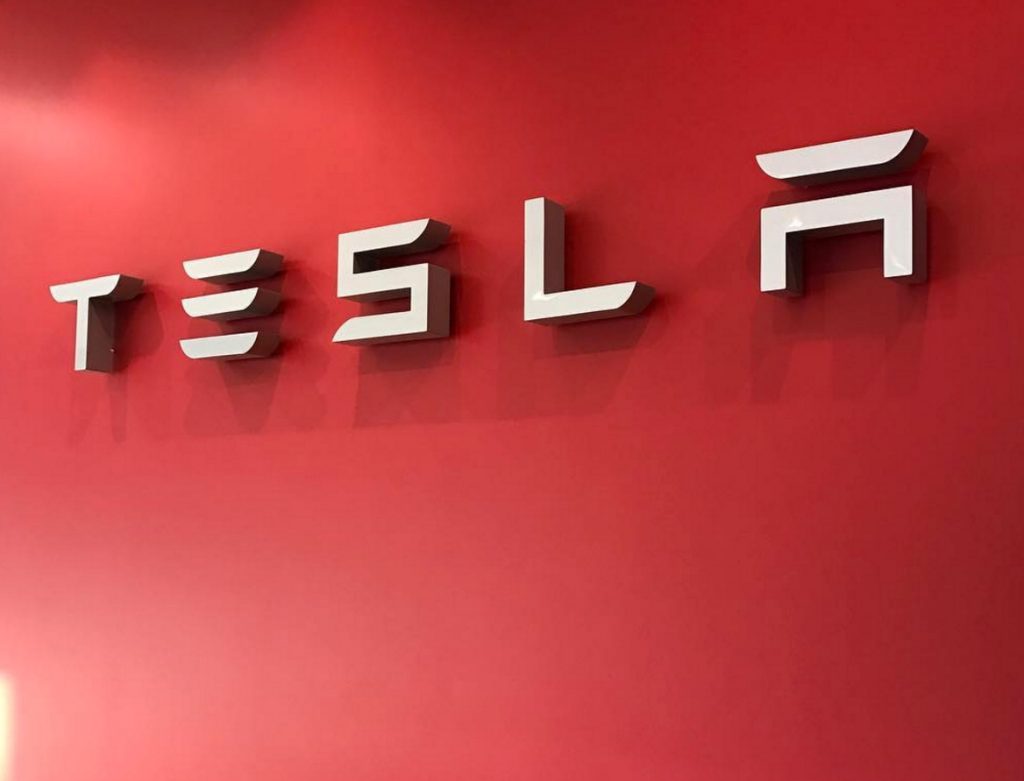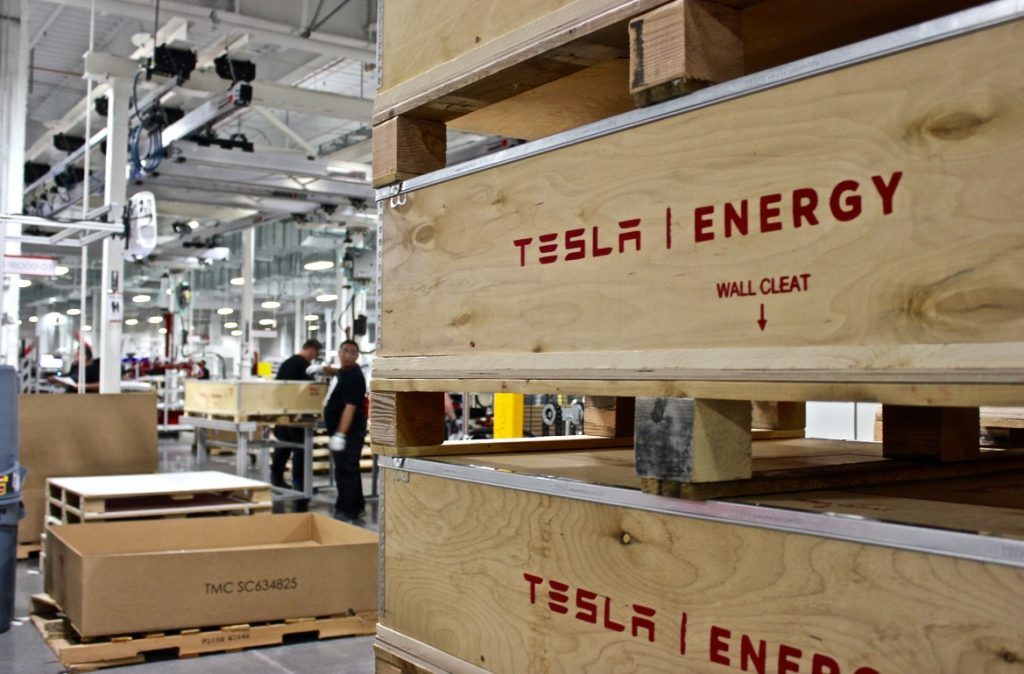

Energy
Tesla Top 5 Week in Review: Competition, Power, and Model 3 Stir the Tesla Brand
This week in the news, we examined the claim that the Dodge Demon may surpass the Tesla Model S P100D as the world’s fastest 0-60 production car. The Model S also was featured for its resale value, as a new survey indicates that the Model S has a much higher second owner value than originally thought. The Tesla board of directors composition may change, if pressure from an investor group led by the California State Teachers’ Retirement System has anything to do with it. Lithium-ion battery technology made the headlines, with Panasonic envisioning improvements that may translate into longer range and increased safety. Finally, information about the final unveiling event of the Tesla Model 3 made potential buyers happy. Here are those stories and more in this week’s edition of the Teslarati week in review.
Dodge “Demon” looks to dethrone Tesla’s title for “quickest production car” in the world
The Challenger SRT Demon will enter the automotive market with 840 horsepower and 770 pound-feet of torque, according to sources inside Fiat Chrysler automobiles. The car will reportedly be the world’s fastest 0-60 production car — in 2.3 seconds — and from 0-30 m.p.h. — 1 second. Will the Demon eclipse the Tesla Model S P100D, which Motor Trend Magazine deemed the quickest production car in the world after a 2.28 second run to 60 miles per hour? Dodge Demon testing at a sticky drag strip isn’t really comparable to the Tesla Model S P100D record that was earned on a public road, is it? Only time will tell.
Survey ranks used Tesla Model S as #1 in retained value and fastest selling among peers
Survey results released by Autolist suggest that the Model S sells an average of 5% faster than its peer group as well as fastest overall among the best selling vehicles from three companies. The Model S also soared in prices relative to listing price expectations. Some months were 5% over expectations, while the best performing Ford and GMs struggled to top 1%. Affordability for the Model S as contained within the survey results vacillated depending on region, with Maryland providing the most reasonable used Model S costs at 7.2% below the national average.
Investor group urges Tesla to seek board members independent of Elon Musk
The California State Teachers’ Retirement System has led a coalition of concerned investors in a move to pressure Tesla CEO Elon Musk to diversify the Tesla board. With the majority of Tesla board members having personal or professional ties to Musk, the suggestion is that independence or objectivity might become compromised. The managers who have expressed concern control a combined $721 billion in assets. They have also advocated for annual, rather than staggered three year director elections. “Directors should be held to a higher standard of independence given the conflicts of interest that permeate this board,” the letter to Tesla director Antonio Gracias said. “A thoroughly independent board would provide a critical check on possible dysfunctional group dynamics, such as groupthink.”
Tesla partner Panasonic says 30% energy density increase in lithium-ion batteries possible
Recent comments by Panasonic indicate that, while Lithium-ion batteries (LIBs) represent revolutionary technology when applied to today’s electric vehicles, future progress must continue. LIBs at the present are near to a theoretical maximum energy density. Because drivers are demanding longer ranges and quicker charging times, more R&D is needed to improve the current state of LIB technology. “We think the existing technology can still extend the energy density of LIBs by 20% to 30%,” Panasonic’s President Kazuhiro Tsuga said. “But there is a trade-off between energy density and safety. So, if you look for even more density, you have to think about additional safety technology as well. Solid-state batteries are one [possible] answer.”
Tesla Model 3 final unveiling event will take place in July
Tesla CEO Elon Musk announced that the Tesla Model 3 will have a third reveal in July, 2017 in anticipation of initial deliveries late this year. The July event will give potential buyers the opportunity to see the Model 3 up in real configurations; the April, 2016 first unveiling didn’t permit media photographs. With many sightings of the Model 3 in and around the Palo Alto company headquarters, the anticipation around the Model 3 is at an all-time high. One aspect of the Model 3 that has everyone buzzing is Musk’s statement that the “real steering controls and system” for the Model 3 feel “like a spaceship.” We can’t wait to see for ourselves! Eventual production plans are to incrementally increase Model 3 production in 2018 with eventual annual production of 500,00 units.

Cybertruck
Tesla updates Cybertruck owners about key Powershare feature

Tesla is updating Cybertruck owners on its timeline of a massive feature that has yet to ship: Powershare with Powerwall.
Powershare is a bidirectional charging feature exclusive to Cybertruck, which allows the vehicle’s battery to act as a portable power source for homes, appliances, tools, other EVs, and more. It was announced in late 2023 as part of Tesla’s push into vehicle-to-everything energy sharing, and acting as a giant portable charger is the main advantage, as it can provide backup power during outages.
Cybertruck’s Powershare system supports both vehicle-to-load (V2L) and vehicle-to-home (V2H), making it flexible and well-rounded for a variety of applications.
However, even though the feature was promised with Cybertruck, it has yet to be shipped to vehicles. Tesla communicated with owners through email recently regarding Powershare with Powerwall, which essentially has the pickup act as an extended battery.
Powerwall discharge would be prioritized before tapping into the truck’s larger pack.
However, Tesla is still working on getting the feature out to owners, an email said:
“We’re writing to let you know that the Powershare with Powerwall feature is still in development and is now scheduled for release in mid-2026.
This new release date gives us additional time to design and test this feature, ensuring its ability to communicate and optimize energy sharing between your vehicle and many configurations and generations of Powerwall. We are also using this time to develop additional Powershare features that will help us continue to accelerate the world’s transition to sustainable energy.”
Owners have expressed some real disappointment in Tesla’s continuous delays in releasing the feature, as it was expected to be released by late 2024, but now has been pushed back several times to mid-2026, according to the email.
Foundation Series Cybertruck buyers paid extra, expecting the feature to be rolled out with their vehicle upon pickup.
Cybertruck’s Lead Engineer, Wes Morrill, even commented on the holdup:
As a Cybertruck owner who also has Powerwall, I empathize with the disappointed comments.
To their credit, the team has delivered powershare functionality to Cybertruck customers who otherwise have no backup with development of the powershare gateway. As well as those with solar…
— Wes (@wmorrill3) December 12, 2025
He said that “it turned out to be much harder than anticipated to make powershare work seamlessly with existing Powerwalls through existing wall connectors. Two grid-forming devices need to negotiate who will form and who will follow, depending on the state of charge of each, and they need to do this without a network and through multiple generations of hardware, and test and validate this process through rigorous certifications to ensure grid safety.”
It’s nice to see the transparency, but it is justified for some Cybertruck owners to feel like they’ve been bait-and-switched.
Energy
Tesla starts hiring efforts for Texas Megafactory
Tesla’s Brookshire site is expected to produce 10,000 Megapacks annually, equal to 40 gigawatt hours of energy storage.

Tesla has officially begun hiring for its new $200 million Megafactory in Brookshire, Texas, a manufacturing hub expected to employ 1,500 people by 2028. The facility, which will build Tesla’s grid-scale Megapack batteries, is part of the company’s growing energy storage footprint.
Tesla’s hiring efforts for the Texas Megafactory are hinted at by the job openings currently active on the company’s Careers website.
Tesla’s Texas Megafactory
Tesla’s Brookshire site is expected to produce 10,000 Megapacks annually, equal to 40 gigawatt hours of energy storage, similar to the Lathrop Megafactory in California. Tesla’s Careers website currently lists over 30 job openings for the site, from engineers, welders, and project managers. Each of the openings is listed for Brookshire, Texas.
The company has leased two buildings in Empire West Business Park, with over $194 million in combined property and equipment investment. Tesla’s agreement with Waller County includes a 60% property tax abatement, contingent on meeting employment benchmarks: 375 jobs by 2026, 750 by 2027, and 1,500 by 2028, as noted in a report from the Houston Business Journal. Tesla is required to employ at least 1,500 workers in the facility through the rest of the 10-year abatement period.
Tesla’s clean energy boom
City officials have stated that Tesla’s arrival marks a turning point for the Texas city, as it highlights a shift from logistics to advanced clean energy manufacturing. Ramiro Bautista from Brookshire’s economic development office, highlighted this in a comment to the Journal.
“(Tesla) has great-paying jobs. Not just that, but the advanced manufacturing (and) clean energy is coming to the area,” he said. “So it’s not just your normal logistics manufacturing. This is advanced manufacturing coming to this area, and this brings a different type of job and investment into the local economy.”
Energy
Tesla and Samsung SDI in talks over new US battery storage deal: report
The update was related by industry sources and initially reported by South Korean news outlets.

Recent reports have suggested that Tesla and Samsung SDI are in talks over a potential partnership to supply batteries for large-scale energy storage systems (ESS).
The update was related by industry sources and initially reported by South Korean news outlets.
ESS batteries to be built at Samsung’s Indiana plant
As noted in a report from Korea JoongAng Daily, the demand for energy storage systems has been growing rapidly in North America, thanks in no small part to the surge in AI investments across numerous companies. With this in mind, Tesla has reportedly approached Samsung SDI about a potential battery supply deal.
The deal is reportedly worth over 3 trillion Korean won (approximately $2.11 billion) and will span three years, according to The Korea Global Economic Daily. A battery supply deal with Samsung SDI could make sense for Tesla as the company already has a grid-scale battery, the Megapack, which is perfect for industrial use. Samsung SDI could simply supply cells for the EV maker.
Production of the batteries would reportedly take place at Samsung SDI’s joint venture factory with Stellantis in Indiana, which is currently under construction. Samsung SDI recently announced plans to use part of that plant’s EV lines to produce cells for ESS, with a targeted capacity of 30 GWh by the end of next year.
Tesla and Samsung’s partnership
At present, only a handful of manufacturers, including Korea’s LG Energy Solution, Samsung SDI, SK On, and Japan’s Panasonic, are capable of producing energy storage-scale batteries domestically in the United States. A Samsung SDI official issued a comment about the matter, stating, “Nothing has been finalized regarding cooperation with Tesla.”
The possible energy storage system deal adds another layer to Tesla’s growing collaboration with Samsung, which is already in line as a partner in the upcoming production of Tesla’s AI5 and AI6 chips. Early sample manufacturing of the AI6 is expected to begin in South Korea, with mass production slated for Samsung’s Texas-based Taylor foundry when it starts operations.
The AI6 chip will power Tesla’s next wave of high-volume projects, including the Optimus humanoid robot and the autonomous Cybercab service. Musk has called the partnership with Samsung a “real collaboration,” adding that he personally plans to “walk the line” at the Taylor facility to speed up progress.













